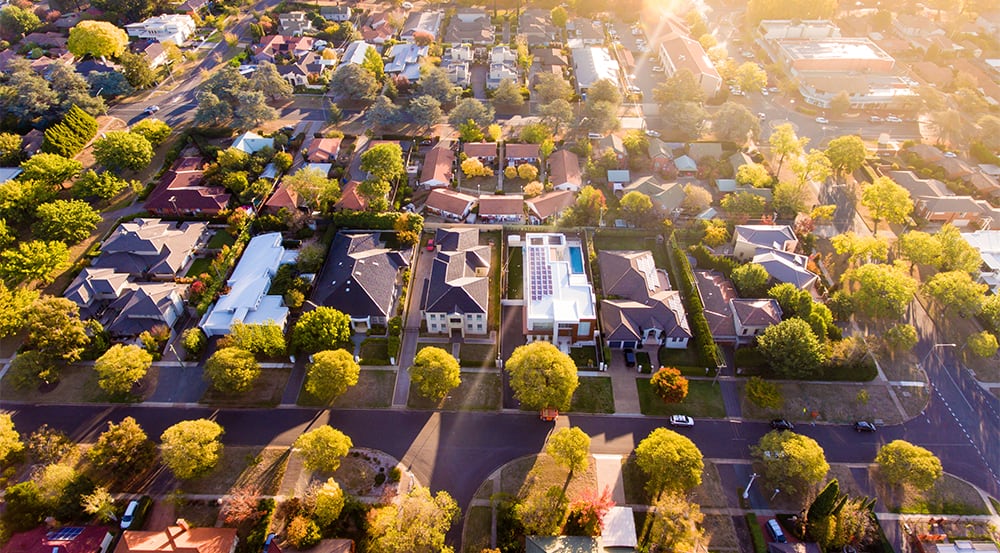A new report by ANZ bank predicts that property prices will rise by an eye-watering 17% in 2021, and a further 6% in 2022. That’s 23% over two years, almost unprecedented in modern history.
But is this dramatic forecast really accurate? And if it is, what does that mean for buyers and sellers of property in Australia?
The ANZ forecast
The ANZ forecast is a significant turnaround from the dire predictions of 2020. Senior ANZ economists now believe that every capital city will experience double digit growth.
The biggest gains will be in Sydney and Perth, both of which are forecast at 19% by the end of 2020. Sydney and Melbourne were the two capitals hardest hit by the COVID lockdowns of 2020, as these are the cities most reliant on immigration and international visitors for their continued growth. Perth is a different story: the reversal of fortune here comes after a ten year period of sluggish growth.
Brisbane, Canberra, Melbourne and Darwin are all tipped at around 16-17%, with Adelaide bringing up the rear at ‘only’ 13%. It’s worth noting that Adelaide, Hobart and Darwin were the only cities not to experience any drop in prices at the peak of the pandemic, instead posting slow but steady growth throughout.
The lower growth predicted for 2022, pegged at 6% nationally, is more to do with regulation than slowing demand. ANZ believes that high growth in 2021 could prompt the Australian Prudential Regulation Authority (APRA) will introduce macro prudential measures to slow growth.
Do other experts agree?
None of the other economic forecasters are prepared to sign off on numbers as large as those in the ANZ report. However, the consensus is clear that home owners can expect a substantial increase in value over the next two years.
One notable point of difference is that the ANZ forecast predicts the highest growth will be seen in Sydney, partially as a reversal of the 2020 falls. Most other forecasts see Sydney and Melbourne as still vulnerable until the international borders are open, with higher growth predicted for small capitals and the regions.
Commonwealth Bank of Australia
Gareth Aird, the head of Australian economics at the CBA, forecasted a 16% rise over two years in a recent global economic and market update podcast. This comprises a 9% rise in 2021 and a 7% rise in 2022 for house prices, with 5% and 4% increases for units in the same period.
Mr Aird predicts the 2021 rise to break down as follows:
• Sydney and Melbourne: 7.5%
• Hobart, Adelaide and Canberra: 9%
• Brisbane and Perth: 9.5-10%
• Darwin: 12%
AMP Capital
AMP believes that capital city growth will be between 5% and 10% in 2021, and the same again in 2022. Within that range, Dr Shane Oliver believes that the highest gains are to be found in smaller capitals and regional areas.
He predicts rises on the lower end for Sydney and Melbourne, which are more exposed to the international buyer market and more reliant on recent immigration. By contrast, he expects Adelaide, Hobart, Brisbane, Perth and Darwin to post gains of 10% or more.
National Australia Bank
NAB is very slightly more conservative than the CBA, predicting 8% growth in 2021 and 6% growth in 2022. However, the outlook for houses is stronger at a 10% rise.
As per other experts, the NAB expects to see the bigger gains in the smaller capitals. As with other predictions, the smaller capitals do best here. Brisbane is predicted to rise by 10.1%, Adelaide 8.9% and Hobart 9.7%, while Sydney will increase by 7.3% and Melbourne by 8.4%.
What is contributing to the steep price rise?
Why the abrupt turnaround? There are a number of factors, but the main one is this. A year ago, nobody could have predicted how well Australia would come through the COVID-19 pandemic and how quickly our economy would recover.
Consumer and business confidence have bounced back quickly, our COVID numbers remain extremely low, and unemployment numbers are falling quickly.
The RBA reduced interest rates to the all-time low of 0.1% and strongly indicated that they intended to keep them there for at least a couple of years. All of the forecasts have factored this in, which is in line with market expectations.
At the same time, the government introduced additional stimuli to the housing market, including the HomeBuilder grant to encourage new construction. Banks offered mortgage holidays for those who had lost work, avoiding an avalanche of defaulting mortgagees and forced property sales that would have driven down prices.
Those who were lucky enough to keep their jobs throughout emerged from the lockdowns with significantly increased savings, due to less opportunities for discretionary spending.
As a result of all these things, ABS figures reveal that owner-occupier loans rose 38.9% between December 2019 and December 2020. Auction rates are strong, and real estate agents are reporting buyer demand that outstrips supply.
By the end of 2020, the median house price had hit new record levels in most capital cities. Sydney’s median was $1,211,488 in December 2020, Brisbane at $738,000 and Melbourne at $936,073.
In the first quarter of 2021, those prices have risen again. Sydney has already recorded a gain of 7.5%, Brisbane at 5.9% and Melbourne at 5.3%.
If you’re thinking about selling, should you hold on for higher prices? While no experts are predicting a downturn any time soon, the current market is very favourable for sellers. Many agents are finding it hard to keep enough properties on the market to meet demand, with multiple offers for every home.
For most buyers, sooner is better than later. While you should never rush into a purchase, prices are only set to rise from here. Take advantage of low interest rates and hit the opens!
